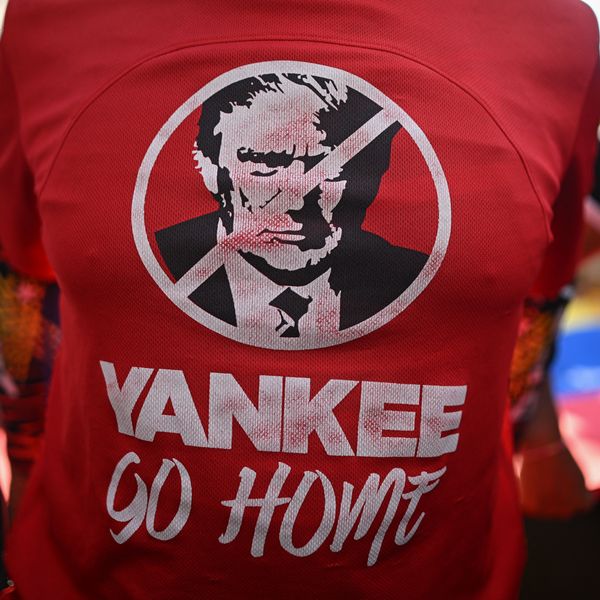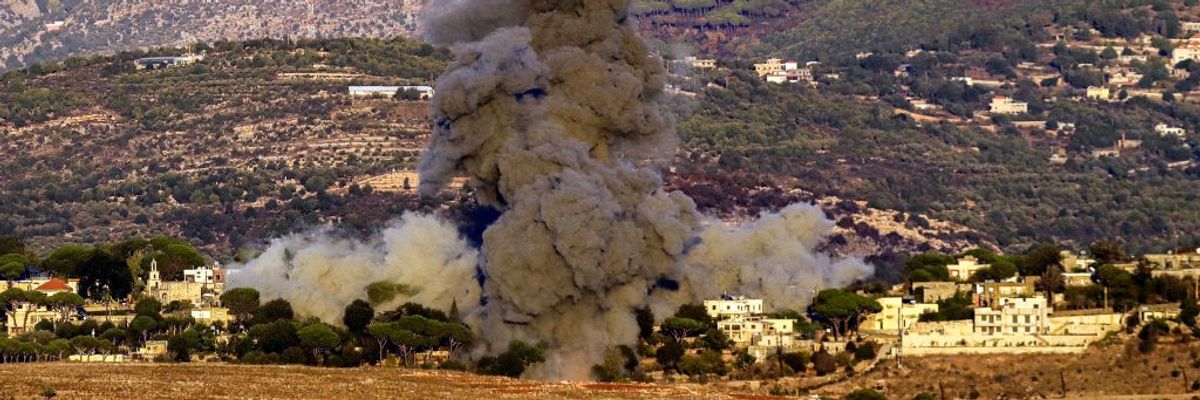As of this writing, Israel’s rampage in Lebanon has killed more than a thousand people in two weeks, wounded thousands more (including many maimed for life), and displaced hundreds of thousands.
The Israeli onslaught — including the assassination of Hezbollah leader Hassan Nasrallah with a 2,000 pound, U.S.-made bomb that killed others too — has mostly garnered approval from American leaders, particularly the president and vice president.
Continuing its genocidal assault of Gaza, bombing Yemen for the second time this year, and carrying out aerial bombardment in Lebanon at a speed and on a scale perhaps unseen in the 21st century, Israel launched a ground invasion on Tuesday, one it described as "limited" in scope. As the invasions and attacks escalate and expand across the region — and Washington continues to send Israel weapons — here are six key things to know about the crisis in Lebanon and how it could be resolved.
1. Israel has a long history of attacks on Lebanon.
In 1982, at the height of Lebanon’s catastrophic, 15 year civil war, Israeli forces invaded, attacking Lebanese villages and Palestinian refugee camps with tanks, airstrikes, and shells.
Israel laid siege to Beirut and collaborated with far-right Christian Lebanese militias as they carried out a notorious massacre of Palestinian refugees in Sabra and the Shatilla refugee camp, killing thousands.
It was during these years that Hezbollah formed to fight the Israeli occupation.
2. Israel occupied Lebanon for 15 years.
Israel occupied a wide strip of Southern Lebanon from 1985 until 2000.
During that time, the Israeli military propped up the South Lebanon Army (SLA) militia, which detained Lebanese and Palestinian dissidents at a notorious prison — administered under Israeli protection — where Amnesty International and other human rights organizations documented systematic torture.
Israel justified its brutal occupation by claiming it needed a “buffer zone” to protect itself — the same excuse it is using to justify its attacks in southern Lebanon today.
3. Hezbollah is a political and social organization, not just a military one.
Though Hezbollah formed as a military resistance movement, the organization plays a much larger role in Lebanese society.
Hezbollah began participating in elections after the end of the civil war and remains one of the country’s largest parties today. Hezbollah also runs an extensive social services infrastructure, maintaining hospitals and schools, providing for families of those killed in war, and carrying out reconstruction since Israel’s withdrawal from Southern Lebanon in 2000.
So when Israel detonated hundreds of pagers to attack members of Hezbollah, people targeted included medical, educational, and other non-military personnel.
4. Israel invaded Lebanon again in 2006.
As Israeli forces bombard Lebanon today, they are reviving fresh memories from the last Israeli invasion, in 2006. That assault, which Israel escalated following a brief exchange of rockets across the Lebanon-Israel border, lasted for 34 days, killed over 1,000 Lebanese civilians, and destroyed civilian infrastructure, such as the Liban Lait milk factory.
In the words of an Israeli officer who commanded a rocket unit, “what we did was insane and monstrous; we covered entire towns in cluster bombs.” Unexploded munitions in Southern Lebanon have remained over the years since, posing a grave threat to residents — especially children.
The 2006 Israel-Lebanon war was fought simultaneously with the first major Israeli assault on Gaza following the withdrawal of settlers there.
5. A permanent ceasefire in Gaza could halt the fighting in Lebanon.
Given the history, it’s not surprising that there have been frequent military exchanges on the Israeli-Lebanese border. But the past year of violence is rooted directly in the catastrophic Israeli offensive in Gaza.
Hezbollah fired rockets at Israel on Oct. 8, 2023 and Israel has carried out its own cross-border strikes. Though Hezbollah has rockets capable of striking almost any Israeli city, it has largely — with a few exceptions — limited its attacks to villages across the border, which were largely evacuated after October 7.
Hezbollah has said it will stop firing rockets when Israel ends its assault in Gaza. Indeed, when Israeli forces and Hamas reached a temporary ceasefire and exchange of hostages and prisoners in November 2023, Hezbollah honored the ceasefire.
6. Suspending U.S. arms sales is key to getting a ceasefire.
Ending the growing disaster in Lebanon — and preventing its escalation into an expanded war — requires the same solution as ending the carnage in Gaza: an immediate and lasting ceasefire. And that means the U.S. must stop sending arms to Israel.
President Biden, in his final address to the UN General Assembly on September 24, said that it is time to “end this war.” But his actions say the opposite. In August, the White House approved $20 billion in new weapons transfers to Israel despite months of well-documented abuses by Israeli forces in Gaza and months of Israeli threats to invade Lebanon.
The devastation in Gaza, and now perhaps Lebanon as well, will take generations to recover from. But the first step is for Washington to stop sending the weapons — in line with what the majority of Americans are demanding.



